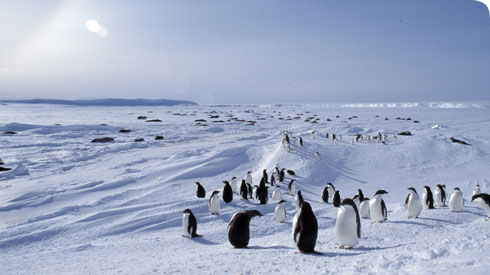Antarctica fact file
Antarctica is the most remote continent on Earth. It is also the driest, coldest and windiest. Learn about Antarctica’s unique environment and how wildlife has adapted to its extreme climate in the facts below.
Geography and environment
- The coldest recorded temperature was -89.2°C at the Russian base station Vostok in 1983.
- Scientists have discovered fossils of dinosaurs and trees in Antarctica, which shows it was once warm and covered in forests and wildlife.
- In the middle of summer it is light all day, while in winter there is total darkness.
- Antarctica receives so little moisture that is classified as a cold desert.
- Antarctica is nearly twice as big as Australia, and in the winter its frozen ocean doubles in size.
- An ice sheet covers around 98% of Antarctica’s surface. It contains 90% of the world’s ice and 70% of the world’s fresh water. At its thickest point, the ice sheet is 4.7km deep.
- There are active volcanoes on Antarctica. Mount Erebus constantly spurts hot lava onto the ice.
Wildlife
- The environment is very harsh in the centre of Antarctica so wildlife generally lives by the coast or in the ocean.
- Small organisms such as algae, lichens and mosses protect themselves from Antarctica’s harsh conditions by growing under warming layers of snow or inside cracks in rocks and ice.
- Antarctic fish have a natural anti-freeze chemical that allows them to survive in sub-zero temperatures.
- There are 4 different species of penguin in Antarctica: emperor, gentoo, Adélie and chinstrap. The emperor penguin is the largest and can grow to over 1m tall and dive over 500m into the ocean to feed.
- Orcas are also known as killer whales, but they are in fact a type of dolphin. They use clever techniques to get their prey, such as creating waves that knock seals off floating ice.

